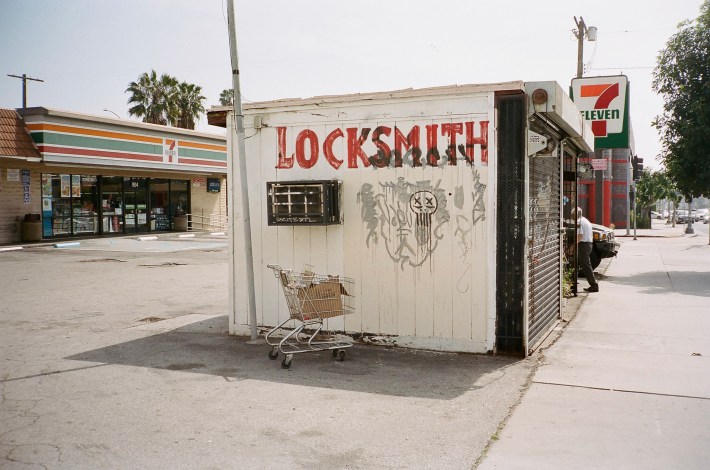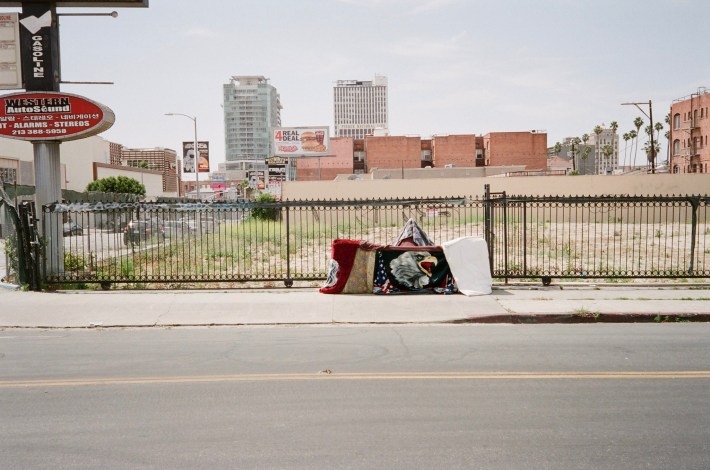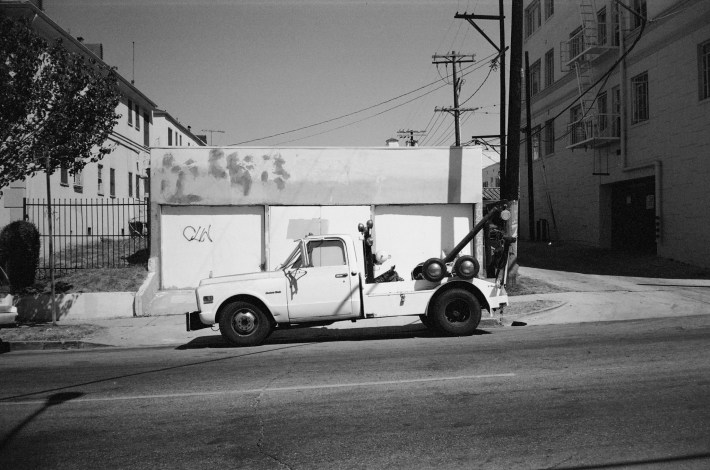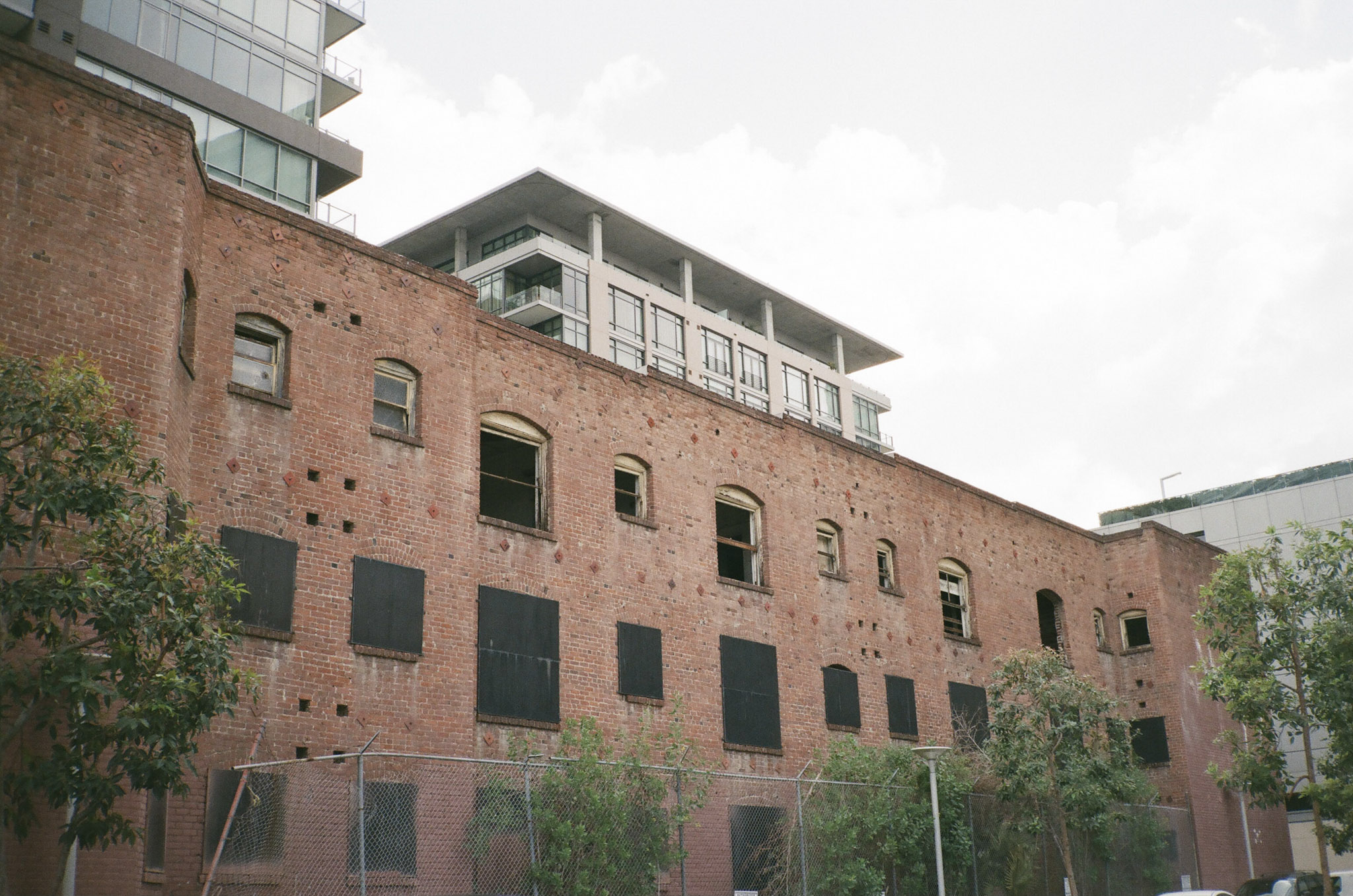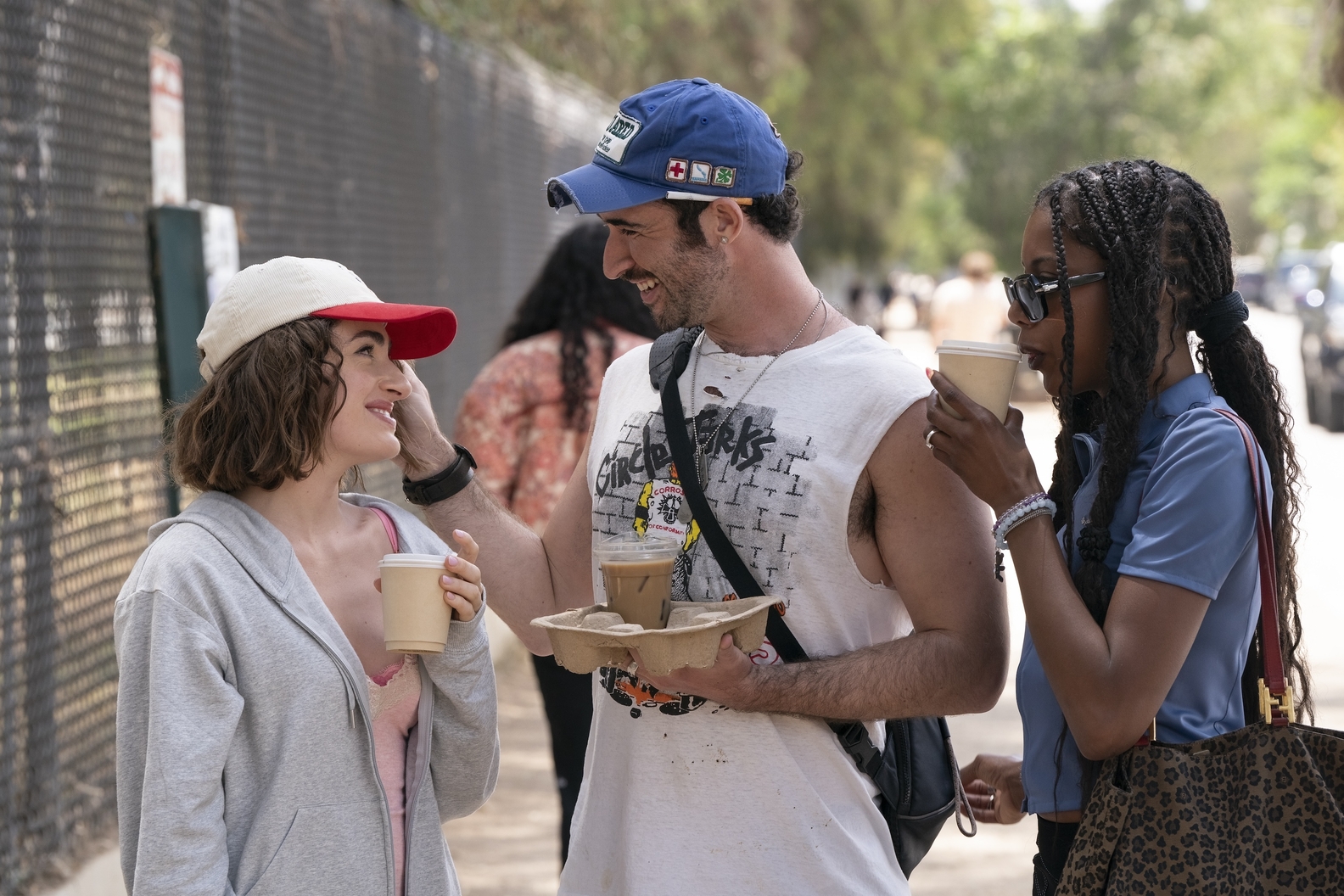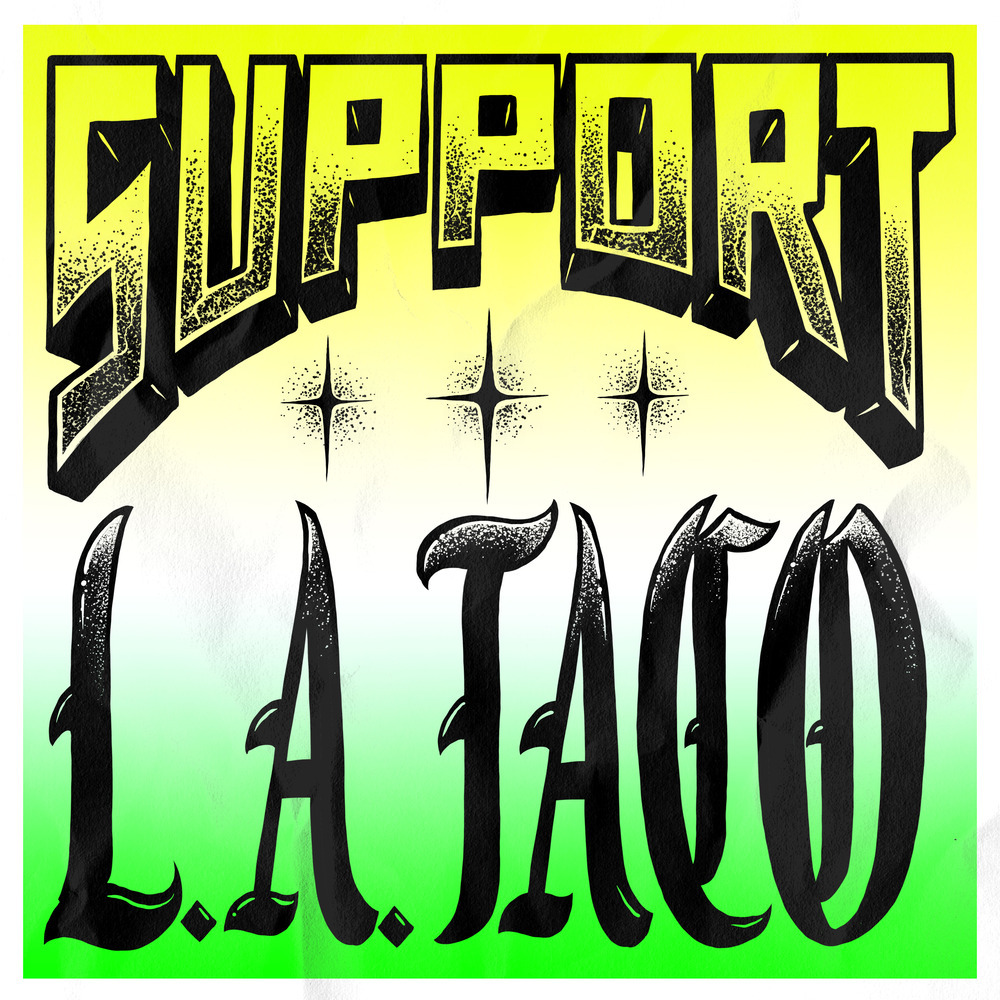5 years ago my first post on L.A. Taco was a short photoessay on how gentrification was changing the city of Los Angeles. In the time since the pace of redevelopment has gone into overdrive, almost completely remaking parts of the city in an incredibly short amount of time. The essay and selected pictures below are from my ongoing documentary project, the entire photoessay can be viewed at The Los Angeles Recordings.
Gentrification is a weapon.
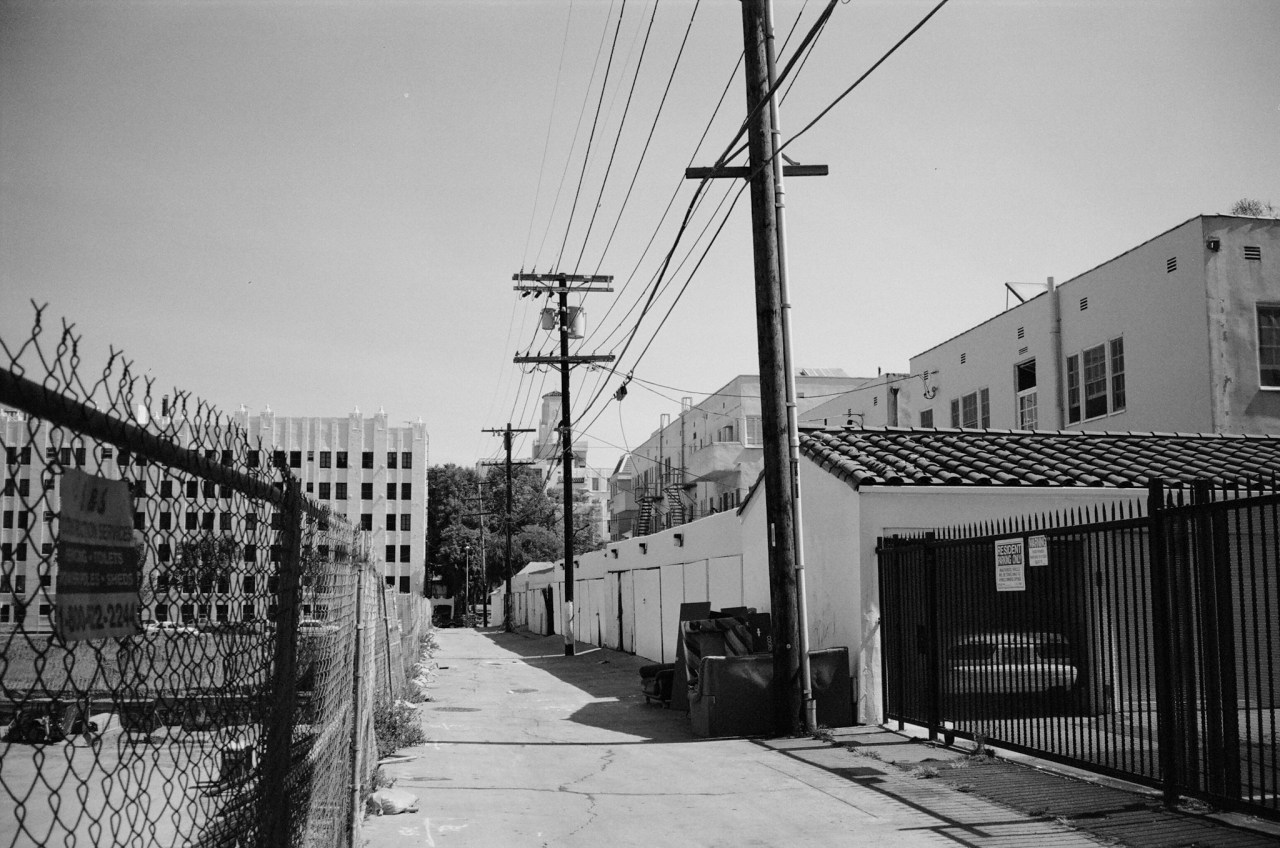
It’s the ultimate expression of manifest destiny applied to spaces determined to be of value. In addition to being forced to live in the most undesirable parts of a given city, poor communities of color are systematically forced out of the neighborhoods they have cultivated. Entire cultures can be considered transient when viewed over a long enough period of time, forced to migrate by factors such as institutionalized discrimination and economic inequality. The cumulative effect is a cylindrical cycle of profit and redevelopment which use the poor as a source for economic growth while preventing them from deriving any benefit.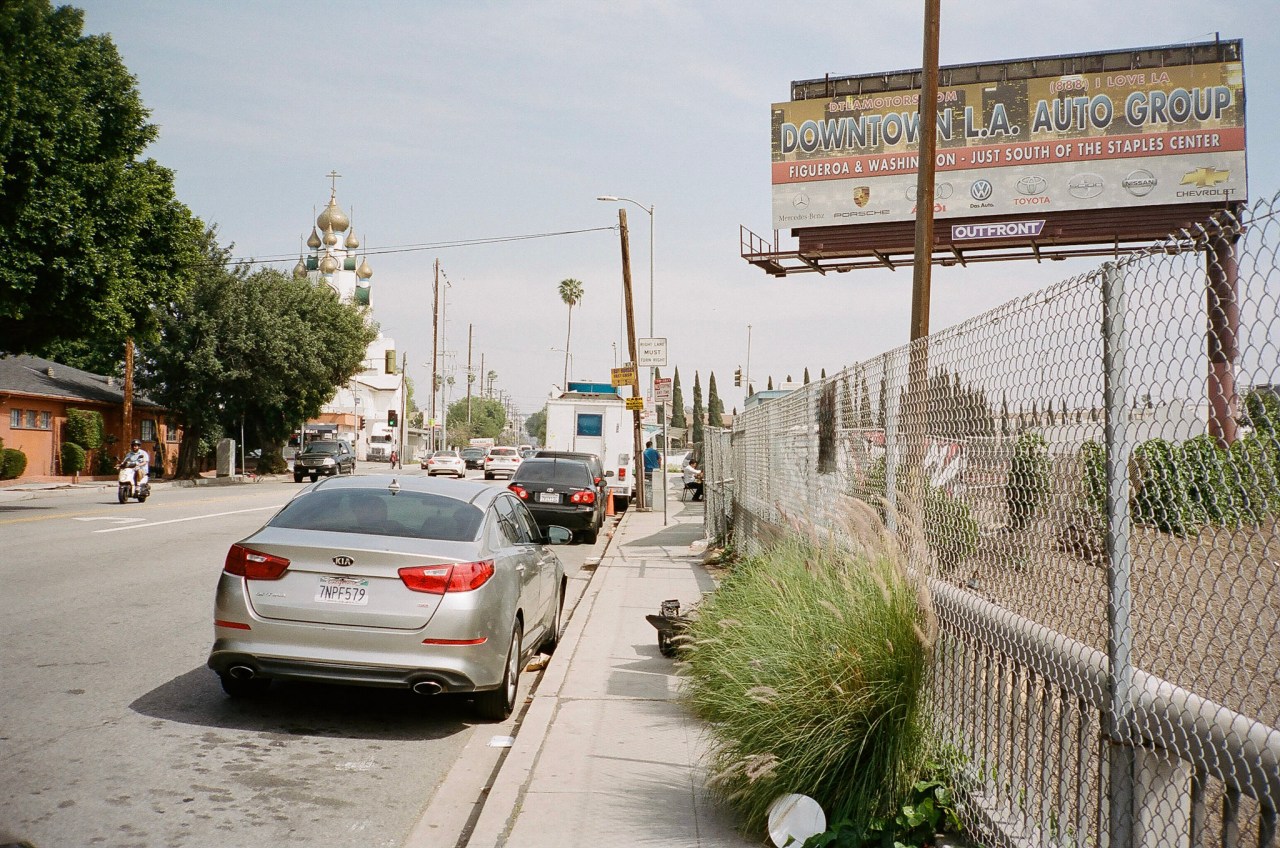
The effort to push vulnerable populations to the margins may seem to be organic but is often an organized campaign. Perpetual, neighborhood wide rent increases coupled with a total and sustained lack of local infrastructure (grocery stores, good public schools, etc…) are the ingredients needed to initiate the desired effect. The primary objective is to subtly, but forcefully encourage the current populace to vacate the immediate vicinity, making room for the more affluent renters. Often, the cultural currency of the neighborhood is used as a selling point to attract more upscale residents. This is a particularly frustrating irony because they are moving to an area built and made desirable by those they are replacing.

The impulse is rooted in the great American tradition of colonialism, the desire to come across a place where people already live and declare it uninhabited (and thus ripe for development). In reality the vast majority of wealth (particularly the acquisition of property) was accumulated either during the age of slavery, in the era of Jim Crow, or as a result of unevenly distributed government benefits such as the post WWII G.I. Bill. To this day the legacy of this effort is used to demonize the poor, powering the perpetual Displacement Engine that systematically dismantles any sense of permanence for entire communities.
